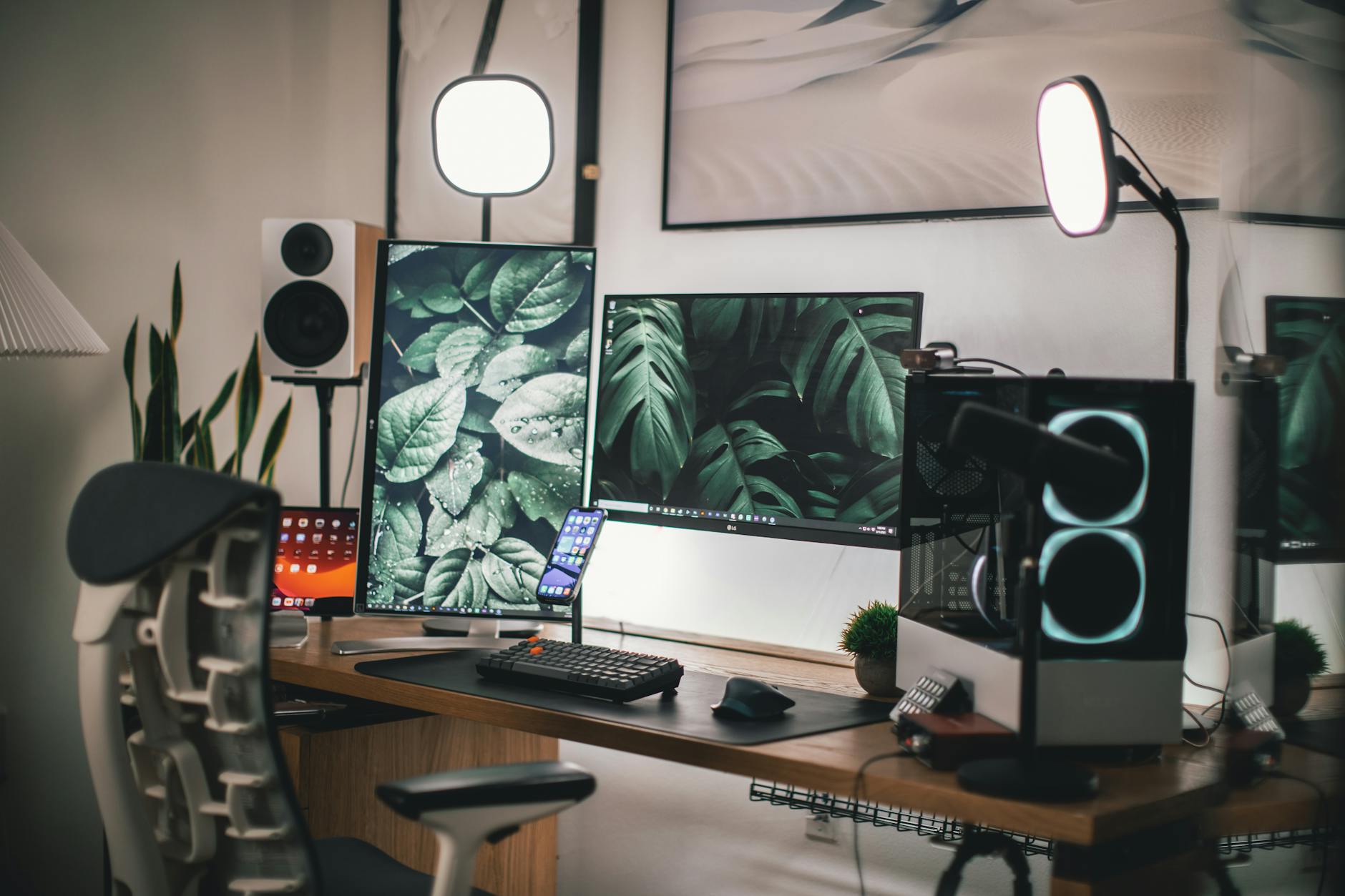Welcome to the ultimate Roblox scripting guide for beginners! Are you fascinated by the incredible games created on the Roblox platform and dream of building your own? The key to unlocking this potential lies in Roblox scripting, a powerful skill that allows you to bring your game ideas to life. This guide is designed to demystify the world of scripting for newcomers, breaking down complex concepts into easily digestible steps. We’ll start with the absolute basics, introducing you to the core language and essential tools, and then gradually move towards understanding how to make your creations interactive and dynamic. Get ready to embark on an exciting journey into game development!
Getting started with Roblox Studio
Before you can write a single line of code, you need the right environment. Roblox Studio is the official development tool for Roblox, and it’s where all the magic happens. It’s a free, integrated development environment (IDE) that provides everything you need: a 3D modeling workspace, a robust scripting editor, and tools for managing your game’s assets.
Upon launching Roblox Studio, you’ll be greeted with various templates to choose from, such as a baseplate, a village, or a racing game. For beginners, starting with a ‘Baseplate’ is highly recommended, as it offers a blank canvas for you to experiment with. The Studio interface is divided into several key windows:
- Explorer: This window shows a hierarchical view of all the objects in your game, from parts and models to scripts and GUIs.
- Properties: Here, you can view and modify the attributes of any selected object, like its size, color, position, and behavior.
- Output: This window displays messages from your scripts, including errors and custom print statements, which are invaluable for debugging.
- Script Editor: This is where you’ll write and edit your Lua scripts. It features syntax highlighting, auto-completion, and error checking to make coding easier.
Familiarizing yourself with these windows and how they interact is the first crucial step towards becoming a proficient Roblox scripter. Don’t be afraid to click around and explore; understanding the layout will save you a lot of time and frustration later on.
Understanding the Lua programming language
Roblox uses a programming language called Lua, which is known for its simplicity, speed, and ease of integration. While it might seem intimidating at first, Lua is designed to be beginner-friendly, especially compared to some other coding languages.
At its core, scripting is about giving instructions to the game. These instructions are written in Lua and tell the game what to do, when to do it, and how to do it. Let’s look at some fundamental concepts:
- Variables: Think of variables as containers that hold information. This information can be numbers (e.g.,
10), text (e.g.,"Hello!"), or even more complex data. You declare a variable using thelocalkeyword, followed by the variable name and an equals sign to assign a value. For example:local playerHealth = 100. - Data Types: These are the different kinds of information variables can hold. Common types include:
number: For numerical values.string: For text.boolean: For true/false values (trueorfalse).table: A collection of values, similar to an array or dictionary in other languages.
- Operators: These are symbols that perform operations on values.
- Arithmetic operators:
+(addition),-(subtraction),*(multiplication),/(division). - Comparison operators:
==(equal to),~=(not equal to),<(less than),>(greater than). - Logical operators:
and,or,not.
- Arithmetic operators:
- Functions: Functions are blocks of code that perform a specific task. You can call them multiple times without rewriting the code. They can take inputs (arguments) and produce outputs. For example:
local function greet(name) print("Hello, " .. name .. "!") end greet("Roblox Developer") -- This will print "Hello, Roblox Developer!"
Mastering these foundational elements of Lua will provide a solid base for building increasingly complex game mechanics.
Interacting with the game world
Now that you have a grasp of Lua basics, it's time to see how scripting interacts with the actual game environment within Roblox Studio. The core of this interaction revolves around the "Instance" hierarchy and its various properties and services.
Every object in your Roblox game, from a simple brick (a Part) to a player character, is an Instance. These Instances are organized in a tree-like structure shown in the Explorer window. You can access and manipulate these Instances using scripts.
Let's consider how to make a Part change color:
- In Roblox Studio, insert a
Partinto your workspace (Home tab -> Part). - In the Explorer window, find your
Part(it will likely be named "Part" by default) and rename it to something descriptive, like "ColorChanger". - Right-click on
"ColorChanger"in the Explorer window and selectInsert Object -> Script. - Double-click the newly created
Scriptto open it in the Script Editor. - Enter the following Lua code:
local part = game.Workspace.ColorChanger -- Access the part in the workspace -- Change the color to red part.BrickColor = BrickColor.new("Really red") -- Wait for 5 seconds wait(5) -- Change the color to blue part.BrickColor = BrickColor.new("Bright blue")
When you press the "Play" button in Roblox Studio, you'll see your "ColorChanger" part turn red, wait for 5 seconds, and then turn blue. This demonstrates how scripts can directly modify the properties of objects in the game world. Other common interactions include:
- Moving parts: Using
part.Positionto set its location. - Changing size: Using
part.Size. - Detecting player interactions: Using events like
Touched, which fires when another object touches the part.
Understanding how to access and manipulate these Instances is fundamental to creating dynamic and interactive gameplay.
Event-driven programming and basic game logic
The real power of scripting comes alive when you can make your game react to events. In Roblox, almost everything is driven by events – a player jumping, a button being clicked, a part being touched, or even a script starting up. Event-driven programming means your code waits for something to happen and then executes a specific function in response.
Let's expand on the Touched event example. Imagine you want a part to disappear when a player touches it:
- Create a
Partnamed "DisappearBlock" in your workspace. - Insert a
Scriptinto "DisappearBlock". - Write the following code:
local block = script.Parent -- 'script.Parent' refers to the object the script is inside local function onTouch(otherPart) -- Check if the object that touched the block is part of a player local player = game.Players:GetPlayerFromCharacter(otherPart.Parent) if player then block.Transparency = 1 -- Make the block invisible -- Optionally, destroy the block after a short delay -- wait(2) -- block:Destroy() end end block.Touched:Connect(onTouch) -- Connect the 'onTouch' function to the 'Touched' event
In this code:
block.Touched:Connect(onTouch)is the key line. It tells Roblox that whenever theTouchedevent of theblockoccurs, it should call theonTouchfunction.- Inside
onTouch, we get the part that touched our block (otherPart). We then try to find out if this part belongs to a player's character. - If it's a player, we make the block transparent. The commented-out lines show how you could also destroy the block entirely after a delay.
This simple example illustrates a powerful pattern: connect a function to an event. You can use this pattern for countless game mechanics, such as:
- UI Button Clicks: Connecting a function to a button's
MouseButton1Clickevent to trigger an action. - Player Joins: Using
game.Players.PlayerAdded:Connect(function(player) ... end)to run code when a new player enters the game. - Key Presses: While more complex, custom input handling can be set up.
Understanding and utilizing events is crucial for creating a responsive and engaging game that reacts dynamically to player actions and game state changes.
Congratulations on taking your first steps into the exciting world of Roblox scripting! We've covered the essentials, from setting up your development environment in Roblox Studio to understanding the foundational syntax of the Lua programming language. You've learned how to interact with game objects, manipulate their properties, and most importantly, how to make your game respond to events using event-driven programming. These fundamental concepts are the building blocks for creating any game you can imagine on the Roblox platform. Remember that practice is key; the more you experiment, the more comfortable you'll become with scripting. Don't be afraid to explore the Roblox Developer Hub for more resources and to tackle increasingly complex challenges. Keep coding, keep creating, and have fun bringing your unique game ideas to life!
Image by: Pavel Danilyuk
https://www.pexels.com/@pavel-danilyuk


